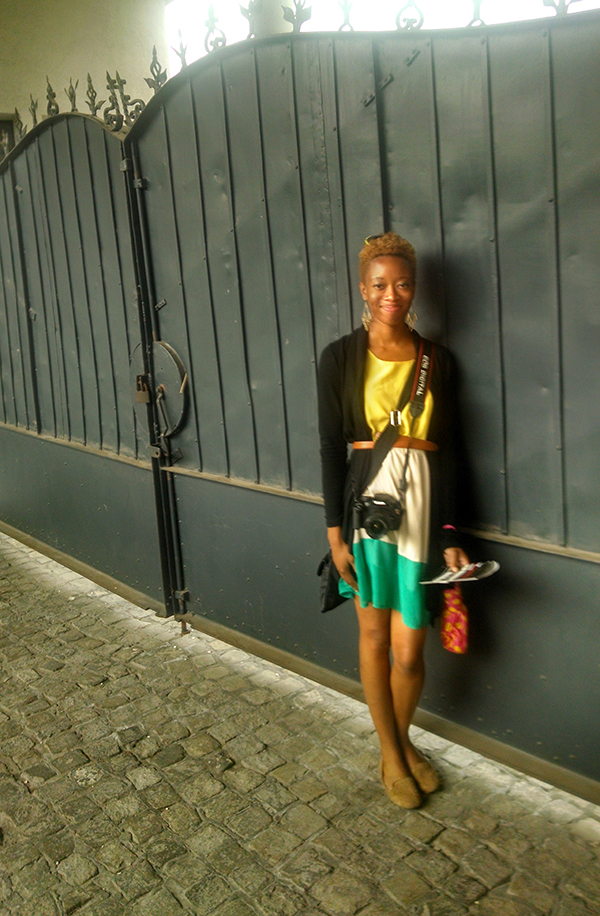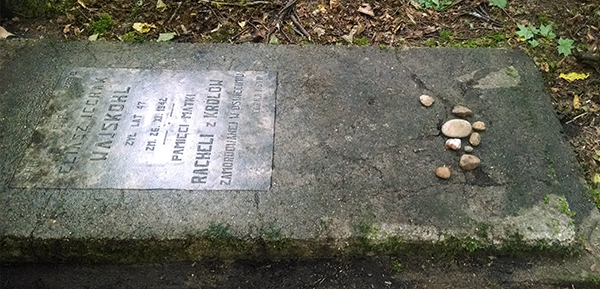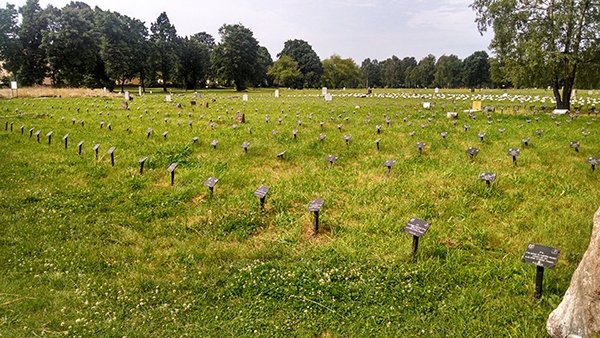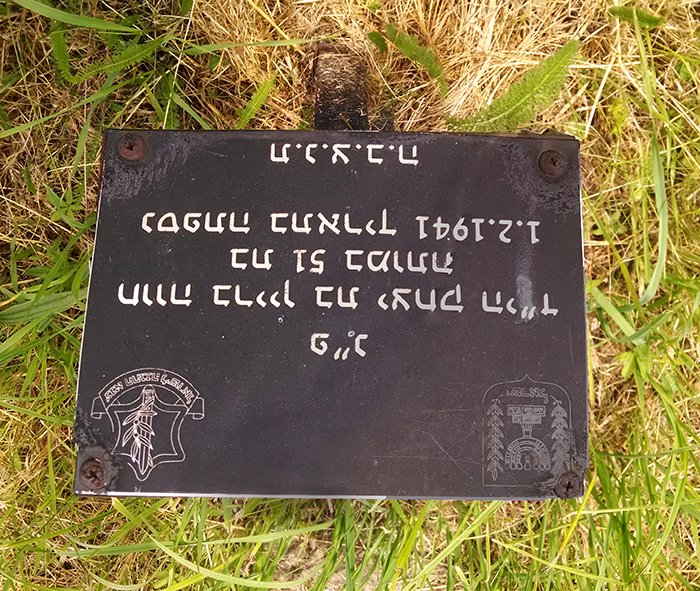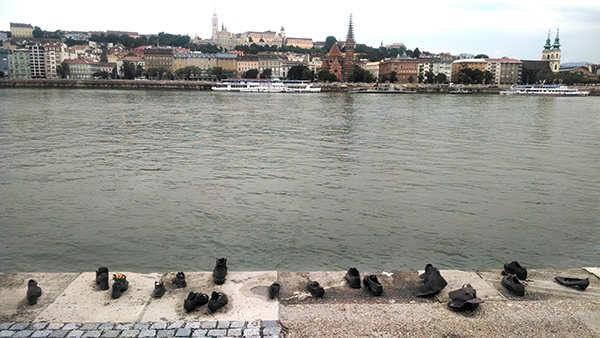My Summer Experience: Viola Ratcliffe
I traveled to Europe to study the Holocaust
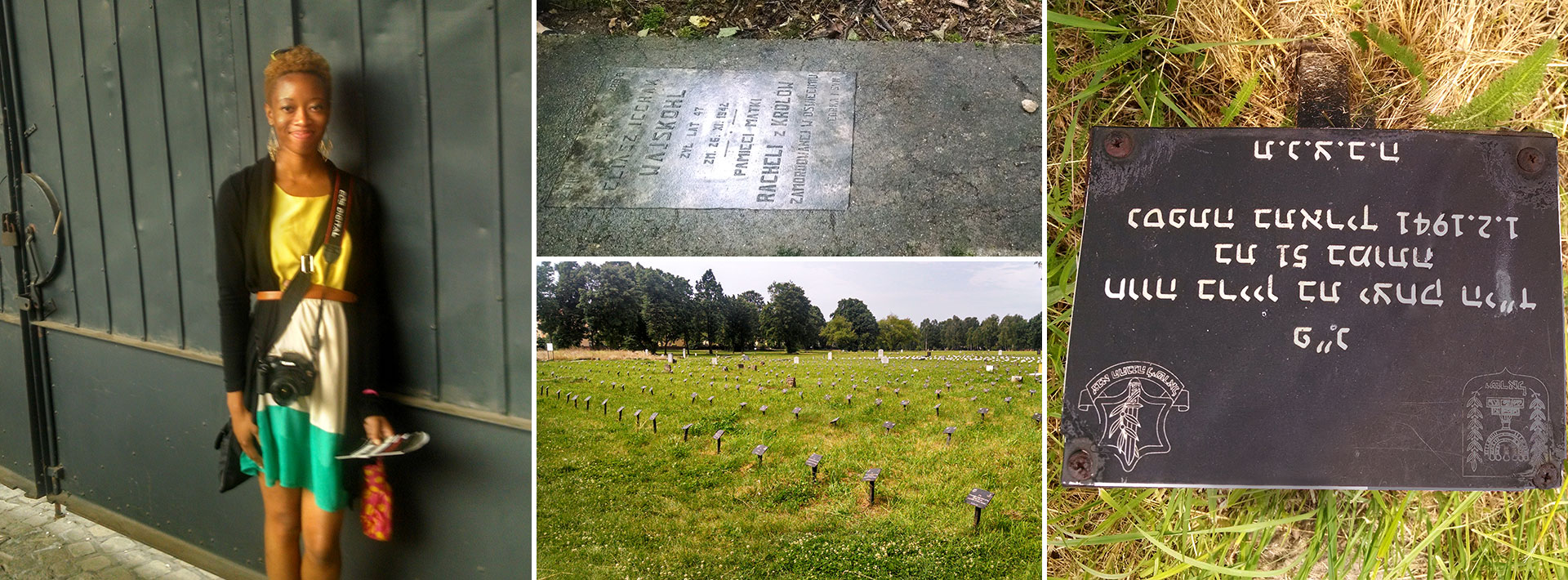
Viola Ratcliffe
Art History
This summer I had the amazing opportunity to accompany BGSU Digital Arts Chair Heather Elliot-Famularo and Education Professor Tim Murnen to the countries of Poland, Hungary and Greece as a part of their Fulbright-Hays funded program “Walking Witness: Civic Responsibility in the Shadow of the Holocaust.”
The project was developed as a component to the Holocaust documentary produced by Famularo entitled “Bearing Witness: The Voices of Our Survivors.” In the documentary, six Toledo holocaust survivors, each from five different countries, share their experiences of survival with Toledo teens. Their accounts of survival are both moving and inspiring and it was for this reason that I wanted to be a part of this incredible program.
I was joined on this trip by seven Toledo schoolteachers and two other BGSU faculty members. It was exciting to be accompanied by so many educators because I knew that they would be able to implement their experiences on the trip into their classroom curriculum, and eventually help to create curriculum that can be used in conjunction with the documentary.
Being that this was the first time that I had ever travelled outside of the United States, I was very excited to have the opportunity to not only research an important part of history, but to also experience another part of the world. The first country that we visited was Poland with the intent of following in the footsteps of Toledo holocaust survivors Phillip Markowicz and Aron Wajskol. The trip to Poland was very special for me. We visited the cities of Warsaw, Lodz and Krakow. We also cleaned a Jewish cemetery and went to both the concentration camps of Auschwitz and Gross Rosen.
Auschwitz was incredibly moving and to actually be able to stand in the place where so many people suffered and died was very sobering. Perhaps the most impactful moment for me took place in Lodz, Poland, during our visit to their Jewish cemetery. Our group went to the cemetery to locate the grave site of Aron Wajskol’s father and when we found it, we were able to honor his family by washing away the dirt and grit that had accumulated since the last time the grave had been visited.
The majority of the cemetery was very overgrown and not well kept, including the area where Aron’s father was buried. The realization that most of the cemetery’s plots were in this condition because there were no more family members left to care for them was startling. For the first time, I understood the reality of what the holocaust was and continues to be for this community and for many communities throughout Europe. For the many of us who do not know a Holocaust survivor, or who have never had the opportunity to meet a survivor, the Holocaust can seem very much removed from our everyday lives. It is hard to wrap your mind around the fact that six million Jews were killed during the Holocaust including the one million who were killed in Auschwitz alone.
However, when you take those numbers and then begin to personalize them, it is no longer just six million people; it is one family, one community, and one individual. In this moment the Holocaust is no longer just a horrific moment in history, it is a moment that forever changed the life of someone who in no way deserved to endure the suffering they experienced.
The more we traveled, the more I began to connect to the survivors that we were researching. In Hungary we visited the city of Pècs, the birthplace of Toledo survivor Clara Rona, and we were able to locate the neighborhood that she grew up in prior to being taken to Auschwitz.
In Greece, we travelled to the city of Trikala, the birthplace of Toledo survivor Abraham Negrin, and we were able to visit his family’s synagogue and meet his cousin. Throughout the trip I was able to see how each country’s experience with the Holocaust differed and I learned of the rendering effects that the Holocaust and World War II left in Poland, Hungary and Greece.
During our journey we visited many museums, memorial sites, synagogues, Jewish cemeteries and archives. We met the U.S. Ambassador to Poland Stephen D. Mull and visited the Consulate General of the United States in Thessaloniki, Greece. We also enjoyed moments of fun and relaxation in between the vigorous research and travel, including attending the Consulate General’s Fourth of July party in Krakow, Poland, walking along the banks of the Danube in Budapest, conquering the climb to the Acropolis in Athens, and taking a dip in the Aegean Sea.
I made many friendships amongst my cohorts—friendships that I truly treasure. It was an incredible five weeks and in the end a life changing journey. I am very thankful to the Director of the BGSU School of Art, Dr. Katerina Ruedi Ray, for recommending that I work with Heather on this trip and I am thankful to both Heather and Tim for taking a chance and letting an art historian accompany them on this incredible venture.
When asked what the biggest take away from this trip is for me, it is the understanding that each of us has a responsibility to ensure that this type of genocide does not happen again. Unfortunately we all know that since the Holocaust, genocide has continued to happen in the world, including in places like Rwanda and Cambodia. I believe that the first step to erasing hate is to acknowledge and embrace the belief that everyone has value, and that intolerance and discrimination on any level is wrong.
As an art historian I believe art is always at the forefront of awareness and social justice. All art is a commentary on the world that we live in, including our environment and our communities. As individuals we have a responsibility to use our talents and creativity to not only improve the life that we create for ourselves, but to also improve the world around us. It is only then that we become one step closer to ensuring that an event like the Holocaust never ever happens again.
Updated: 01/23/2018 11:10AM

